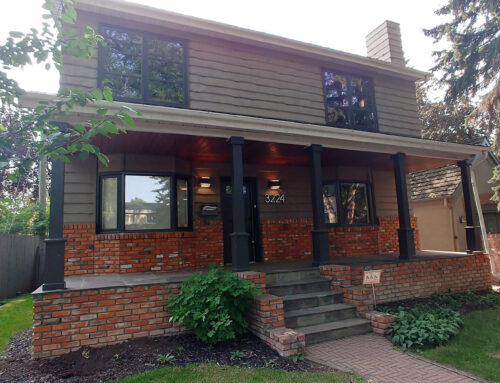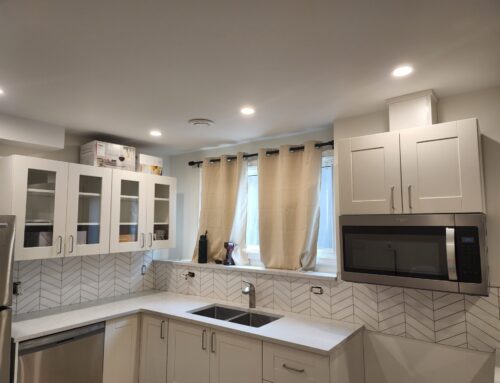Kitchen Cabinet Renovations: Choosing and Renovating Kitchen Cabinets for Style and Functionality
Introduction
Kitchen cabinets play a crucial role in both the functionality and aesthetics of the kitchen. Renovating or replacing cabinets can dramatically transform the space, providing improved storage solutions and a fresh, updated look. This guide explores the key considerations and trends in kitchen cabinet renovations, helping homeowners make informed choices.
Choosing the Right Cabinets
Selecting the right cabinets is the first step in a successful kitchen renovation. Factors such as style, material, and layout should be carefully considered to ensure the cabinets meet both functional and aesthetic needs.
Key Features:
- Cabinet Style: Choose a style that complements the overall design of your kitchen, whether it’s traditional, modern, farmhouse, or transitional.
- Material: Consider materials such as solid wood, MDF, or laminate based on your budget and durability requirements.
- Layout and Configuration: Plan the layout and configuration to maximize storage and accessibility, including features like pull-out shelves and corner cabinets.
Refacing vs. Replacing
For homeowners looking to update their kitchen without a full renovation, cabinet refacing can be an effective and budget-friendly option. Refacing involves replacing the cabinet doors and drawer fronts while keeping the existing cabinet structure.
Key Features:
- Cost-Effective: Refacing is generally less expensive than replacing the entire cabinet system.
- Quick Update: Refacing can be completed faster than a full replacement, minimizing disruption.
- Customization: Choose from a variety of door styles, colors, and finishes to achieve the desired look.
Custom vs. Stock Cabinets
Deciding between custom and stock cabinets is a crucial step in the renovation process. Custom cabinets offer tailored solutions, while stock cabinets provide convenience and cost savings.
Key Features:
- Custom Cabinets: Tailored to fit your specific space and design preferences, offering unique features and high-quality craftsmanship.
- Stock Cabinets: Pre-made, ready-to-install cabinets available in standard sizes and styles, typically more affordable and readily available.
- Semi-Custom Cabinets: A middle-ground option that offers some customization features while being more budget-friendly than fully custom cabinets.
Cabinet Hardware
Cabinet hardware, including handles, knobs, and pulls, plays a significant role in the overall look and functionality of the cabinets. Selecting the right hardware can enhance the design and provide a cohesive aesthetic.
Key Features:
- Material and Finish: Choose hardware materials and finishes that complement the cabinet style, such as brass, stainless steel, or matte black.
- Style: Select hardware that aligns with the kitchen’s design theme, whether it’s modern, traditional, or rustic.
- Functionality: Consider ergonomic designs and placement for ease of use and accessibility.
Innovative Storage Solutions
Modern kitchen cabinets often incorporate innovative storage solutions to maximize space and improve organization. These features can make the kitchen more functional and efficient.
Key Features:
- Pull-Out Shelves: Easy-to-access pull-out shelves and drawers for pots, pans, and pantry items.
- Lazy Susans: Rotating trays in corner cabinets to make the most of hard-to-reach spaces.
- Built-In Organizers: Custom organizers for utensils, spices, and small appliances to keep everything in its place.
Eco-Friendly Options
For environmentally-conscious homeowners, eco-friendly cabinet options are available. Sustainable materials and finishes can reduce the environmental impact of the renovation.
Key Features:
- Recycled Materials: Cabinets made from recycled wood, MDF, or other sustainable materials.
- Low-VOC Finishes: Finishes with low volatile organic compounds (VOCs) to improve indoor air quality.
- Sustainable Sourcing: Wood certified by organizations such as the Forest Stewardship Council (FSC) ensures responsible sourcing.
Conclusion
Kitchen cabinet renovations are a key component of any kitchen makeover, offering an opportunity to enhance both style and functionality. By carefully selecting the right cabinets, considering refacing vs. replacing, and incorporating innovative storage solutions, homeowners can create a kitchen that is both beautiful and practical.
Practical Tips for Kitchen Cabinet Renovations
Here are some practical tips to help you get started on your kitchen cabinet renovation:
- Assess Your Needs: Identify your storage and design needs to choose the right cabinets for your kitchen.
- Set a Budget: Determine your budget and explore options within your price range, including custom, semi-custom, and stock cabinets.
- Consider Refacing: If your existing cabinets are in good condition, consider refacing them for a cost-effective update.
- Choose Quality Materials: Invest in high-quality materials for durability and long-term satisfaction.
- Incorporate Smart Storage: Utilize innovative storage solutions to maximize space and improve organization.
- Select Complementary Hardware: Choose hardware that enhances the cabinet design and fits the overall kitchen aesthetic.
- Think Eco-Friendly: Explore sustainable options to reduce the environmental impact of your renovation.
By following these tips and exploring the latest trends in kitchen cabinet design, you can create a kitchen that meets your needs and reflects your personal style, making it a functional and beautiful space for years to come.







